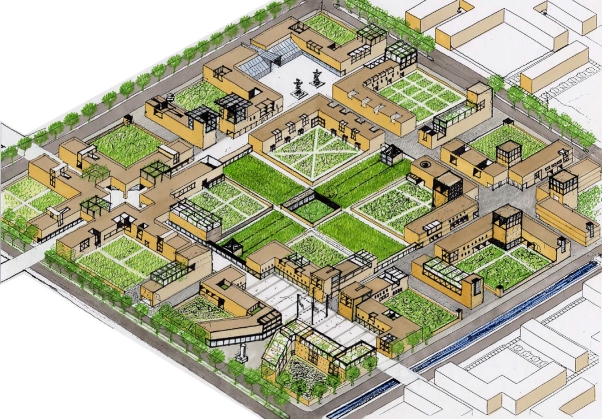
housing area
source: http://www.turismedia.it/
projpujiang.pdf
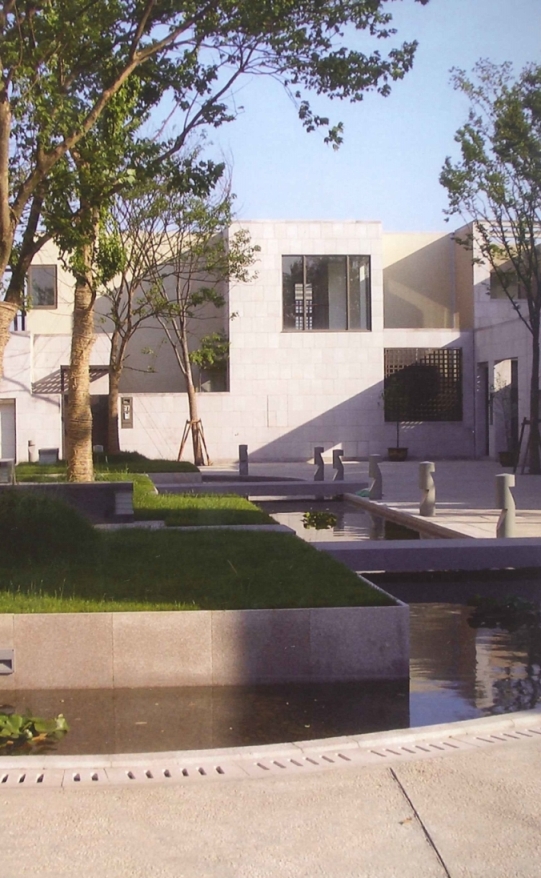
New interpretation of
living aroun a courtyard
source: Den Hartog, Harry:
Shanghai New Towns -
Gregotti Associati;
Searching for community
and identity in a
sprawling metropolis. 010
Publishers, Rotterdam
2010, 416 p. ISBN
978-90-6450-735-9
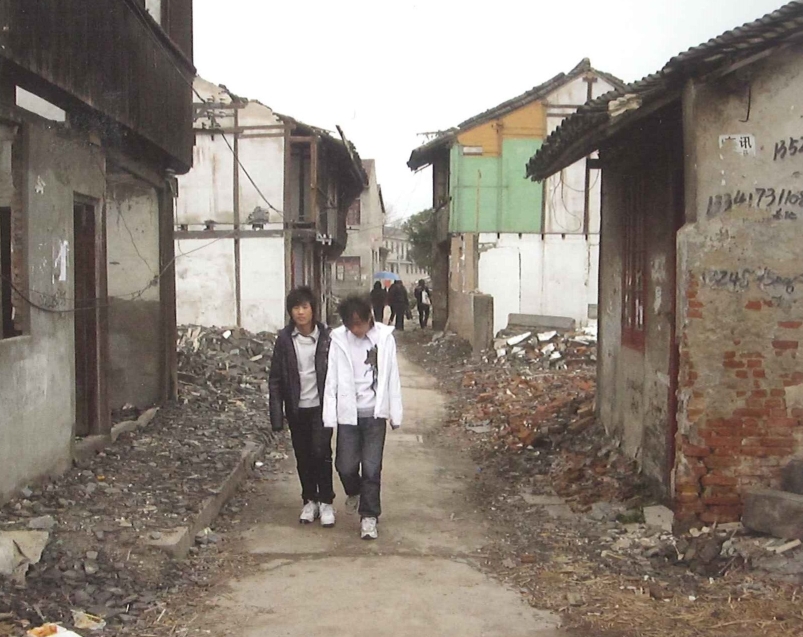
Destruction of an old
village
source: Den Hartog, Harry:
Shanghai New Towns -
Searching for community
and identity in a
sprawling metropolis. 010
Publishers, Rotterdam
2010, 416 p. ISBN
978-90-6450-735-9
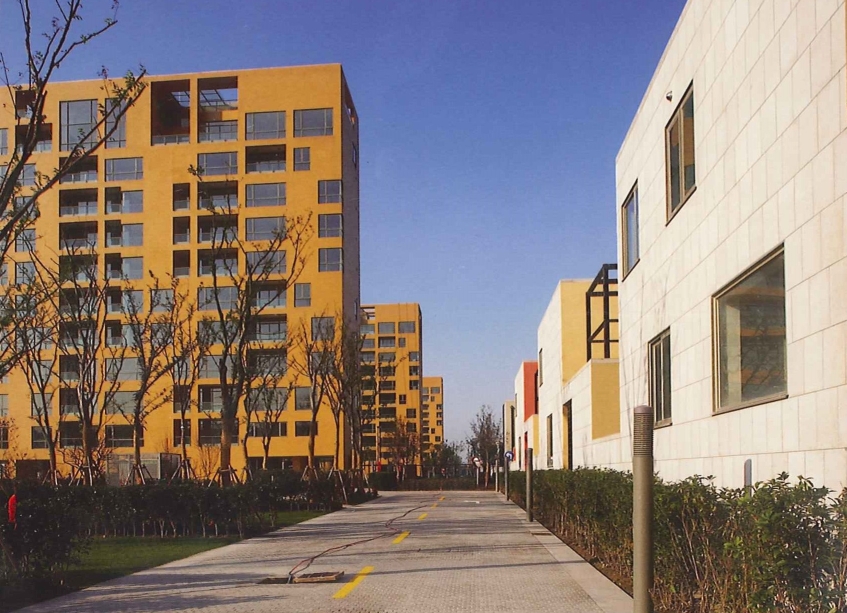
Sterile street in the
northern quarter of the
new town
source: Gregotti Associati; Den
Hartog, Harry: Shanghai
New Towns - Searching for
community and identity in
a sprawling metropolis.
010 Publishers, Rotterdam
2010, 416 p. ISBN
978-90-6450-735-9
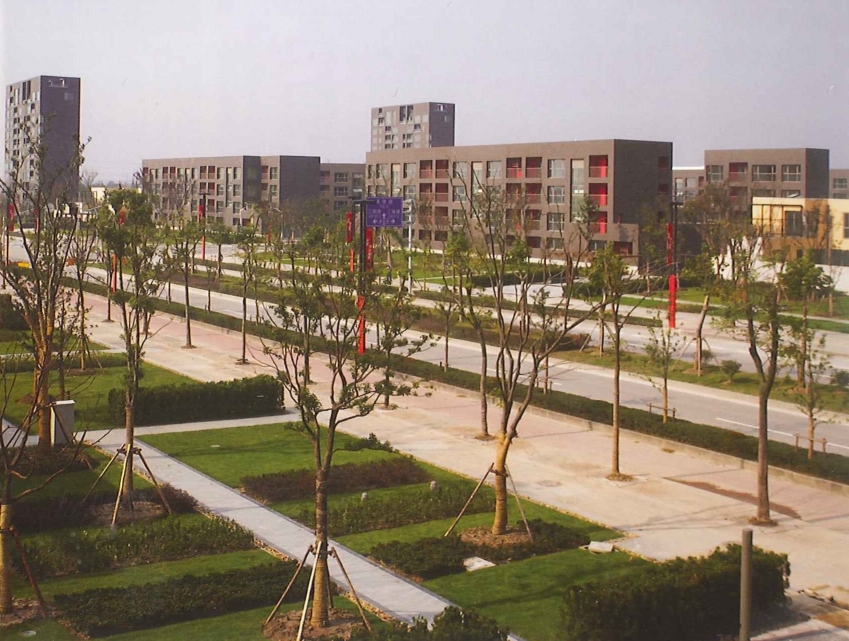
Neo-Racionalistic Italian
planning
source: Gregotti Associati; Den
Hartog, Harry: Shanghai
New Towns - Searching for
community and identity in
a sprawling metropolis.
010 Publishers, Rotterdam
2010, 416 p. ISBN
978-90-6450-735-9
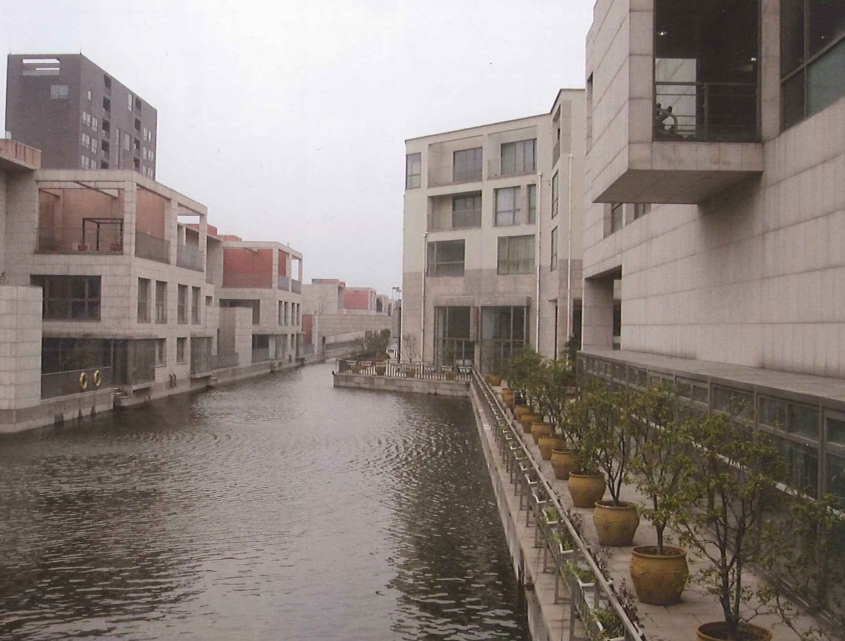
Venetian influences
source: Den Hartog, Harry:
Shanghai New Towns -
Searching for community
and identity in a
sprawling metropolis. 010
Publishers, Rotterdam
2010, 416 p. ISBN
978-90-6450-735-9
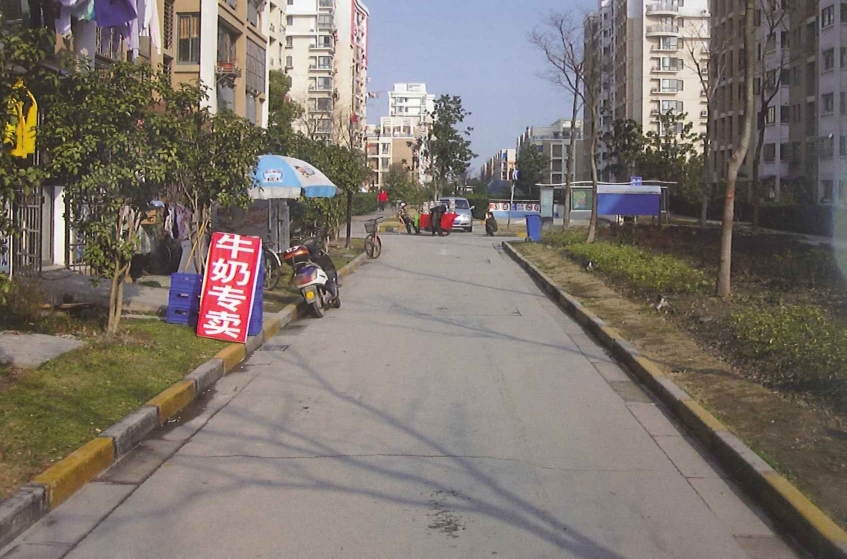
Informal shop in the
southern quarter
source: Den Hartog, Harry:
Shanghai New Towns -
Searching for community
and identity in a
sprawling metropolis. 010
Publishers, Rotterdam
2010, 416 p. ISBN
978-90-6450-735-9
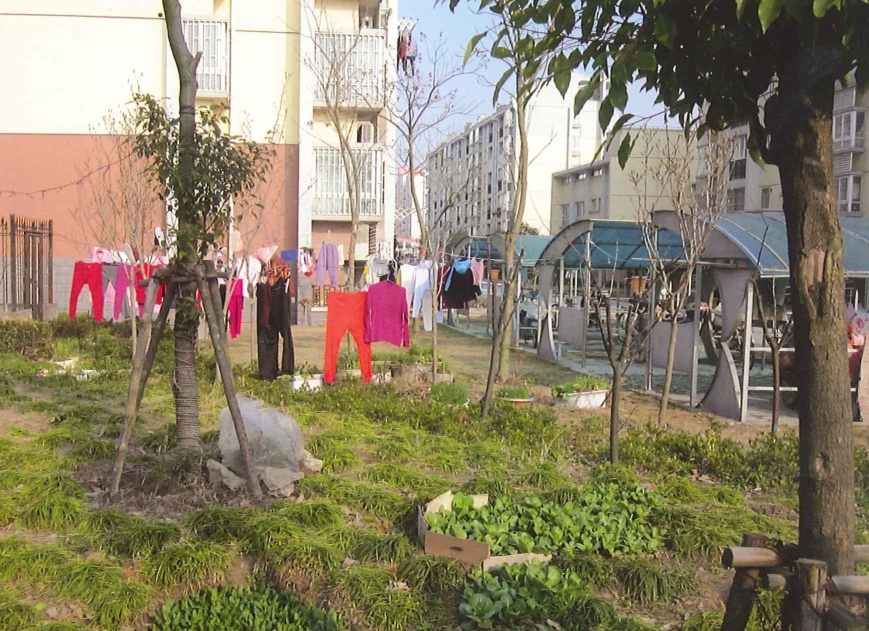
Drying the laundry
andgrowing crops
source: Den Hartog, Harry:
Shanghai New Towns -
Searching for community
and identity in a
sprawling metropolis. 010
Publishers, Rotterdam
2010, 416 p. ISBN
978-90-6450-735-9

Informal market with
migrants on the edge of
the new town
source: Den Hartog, Harry:
Shanghai New Towns -
Searching for community
and identity in a
sprawling metropolis. 010
Publishers, Rotterdam
2010, 416 p. ISBN
978-90-6450-735-9
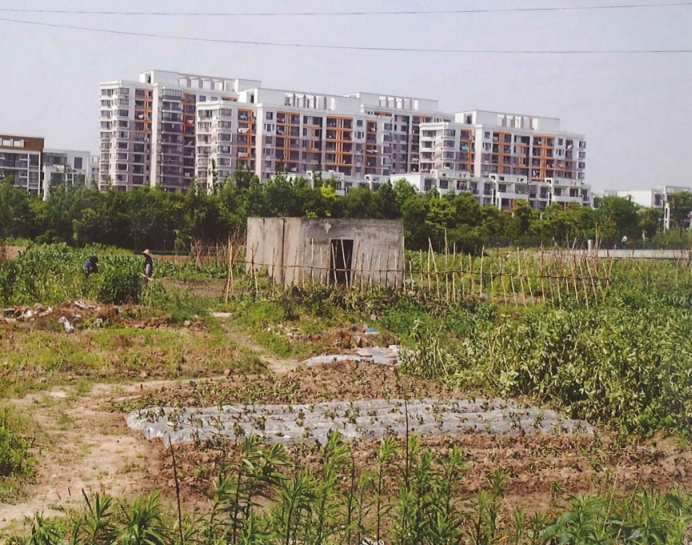
Gardening on the edge of
the new town
source: Den Hartog, Harry:
Shanghai New Towns -
Searching for community
and identity in a
sprawling metropolis. 010
Publishers, Rotterdam
2010, 416 p. ISBN
978-90-6450-735-9
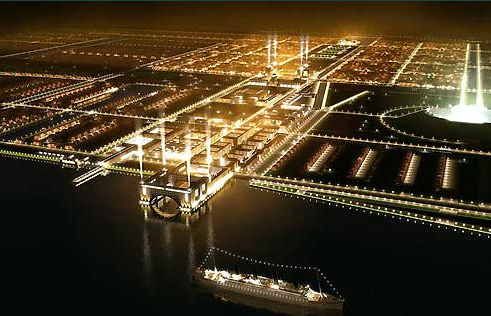
Night view
source: http://www.gregottiassoci
ati.it/projects_list.htm
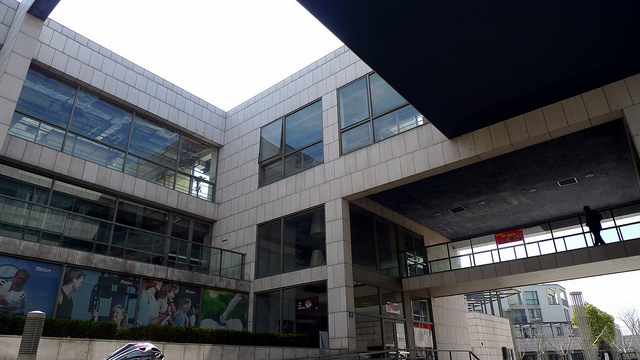
Housing
source: http://triplefiveshanghai
.com/55k-ride-shanghai-it
aly-town/
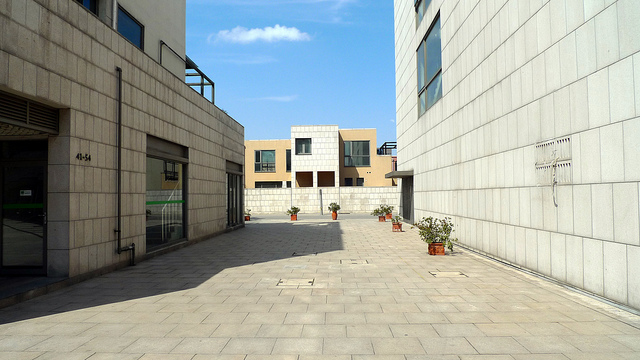
Housing
source: http://triplefiveshanghai
.com/55k-ride-shanghai-it
aly-town/
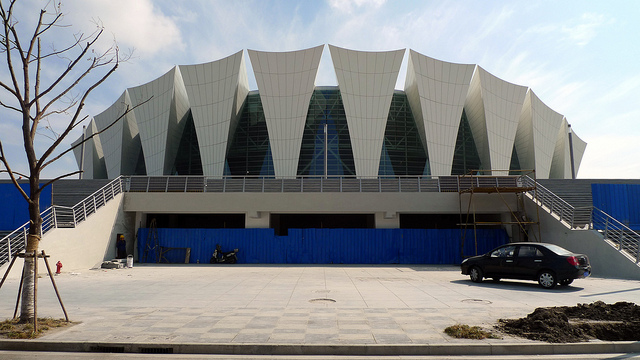
Aquatic Sports centre
source: http://triplefiveshanghai
.com/55k-ride-shanghai-it
aly-town/
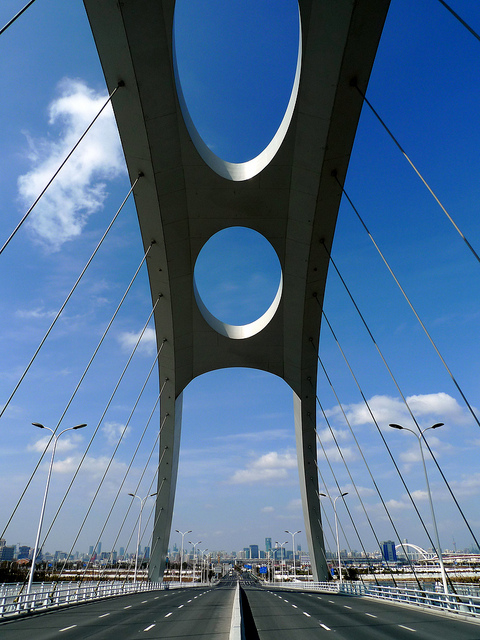
New motorway across the
river
source: http://triplefiveshanghai
.com/55k-ride-shanghai-it
aly-town/
|
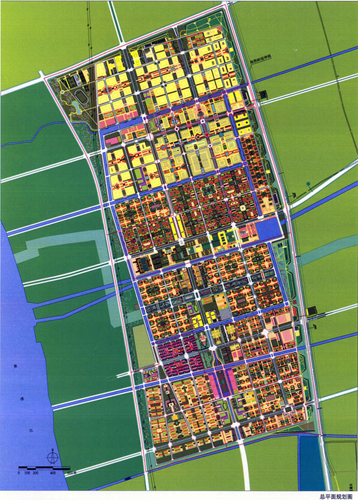
Pujiang New Town (Minhang District) has an Italian theme and is the largest satellite town of ‘One City, Nine Towns’ (2001) development plan. The plan was created to relocate inhabitants from overcrowded Shanghai and vacate the area for the upcoming World Expo in 2010.
Master plan
Shanghai’s central municipal government has not found strong historical or contextual elements on which to base the plan, the town was built on a tabula rasa. The government implemented a canal system forming an imaginary grid giving a shape to the town.
In 2001 the government finally found a complete theme project to their requirements. The winner of the international design competition was an Italian group called Gregotti Associati International (GAI). The firm is co-operating with the municipal authorities of Shanghai to design an Italian-style town, characterised by richness and continuity of squares and public spaces, featuring Italian houses mixed with Chinese motifs. GAI based the design on the neo-rationalist Italian movement from the 1960s, especially the ideas associated with the city Tendenza. This city follows the philosophy of René Descartes (1596-1650), emphasising geometric forms and ideal proportions.
The town is divided into four poles – a Top Grade Neighbourhood around a central axis; a dense standard quarter for relocated inhabitants of the Expo area to the south; and two ecological quarters in the north and west. Furthermore, the master plan is divided into 300-x-300-m blocks that form villages. Each such area forms a unit of about one thousand people, each with its own identity, surrounded by roads and crossed by four pedestrian and cycling routes. Every block represents a small district, standardized residential quarter (xiaoqu).
The Italian designers prepared four types of dwellings – courtyard houses based on Domus Pompeiana (conforming to a standard rectangular plan, organised around a central atrium, or interior court); waterfront townhouses; riverside houses; and garden condominium. To add an identity to place, the team included high raised buildings as a kind of landmark.
According to clearly structured and well-defined historical Italian cities by boundaries, the team surrounded the town by a green belt, partly intended as a reserve for high-voltage power cables and sports facilities.
The town contains three axes extending to the riverfront, where a central one bisects the New Town in two. The central axis functions as a park that contains, for instance, a huge shopping mall, hotels, offices, governmental buildings, a congress centre, a hospital, religious buildings, and a museum with Italian gardens (Pallazo Italia). The monumental axis is flanked by a wide-tree lined avenue and canal, easily accessible by bus or pedestrian network. Facilities such as a community centre, schools, a library, or a theatre are located in the residential area.
Result
According to both Chinese and western planners and residents, the building of the new town was successful. Few elements differ from Italian visions (layout, orientation of buildings), but most of the time the Chinese developers tried to follow the original design.
The most essential problem, as seen by the Italians, is the accessibility and separation of classes. In contemporary Chinese urban planning, it is usual to distinguish various income levels in different neighbourhoods instead of mixing them. This is what has happened in this case, and despite GIA’s proposal to mix functions, housing types and prices are still separated, especially since it is essential in European town planning.
All apartments were sold quickly, in spite of high prices. The sale of villages was not so pleasant. One fifth of all houses were bought for speculation.
The northern ecological part became a luxurious upper-class neighbourhood. According to the initial plan of GAI, all blocks were accessible for pedestrians and connected to one another. But since the land within the blocks was privatized, all public routes were rendered inaccessible by the developer and very well protected.
The southern area has a more pleasant and hospitable environment, with space for informal activities.
As well as many other cities of the same policy (1 City, 9 Towns), the town seems to be empty.
source: Den Hartog, Harry: Shanghai New Towns - Searching for community and identity in a sprawling metropolis. 010 Publishers, Rotterdam 2010, 416 p. ISBN 978-90-6450-735-9. |

